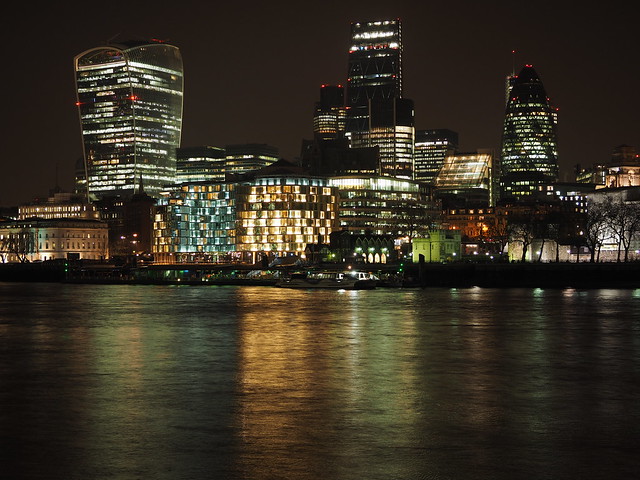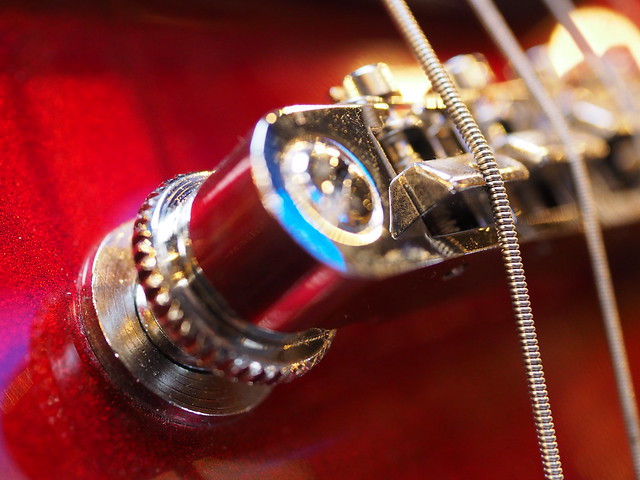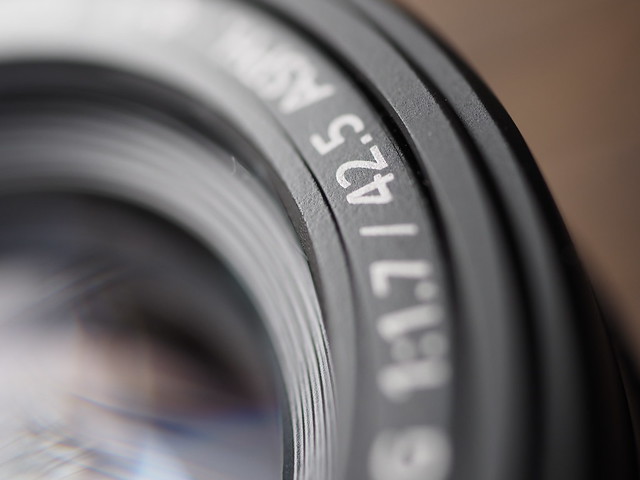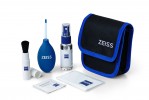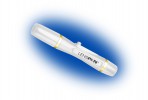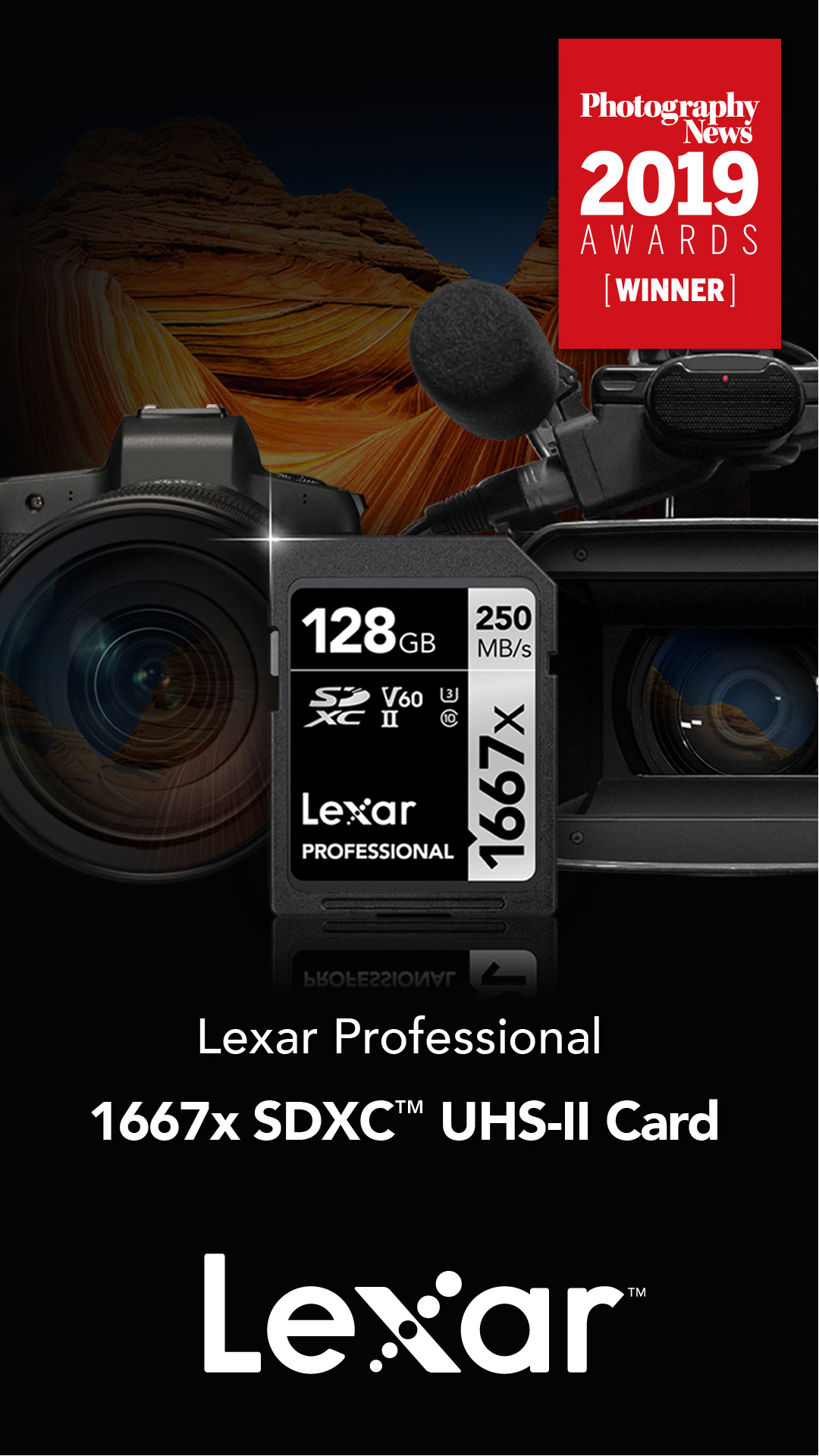Hibrīdkameras objektīvs»Panasonic»LUMIX G MACRO 30mm f/2.8 ASPH. MEGA O.I.S. Black»(new)
Panasonic Lumix G 30mm f2.8 Macro reviewThe Lumix G 30mm f2.8 is a macro lens for the Micro Four Thirds system. This means it'll work on Panasonic or Olympus mirrorless bodies, on which it'll deliver a 60mm equivalent field of view. Since that's close to 50mm standard coverage, the lens also doubles-up as a general-purpose prime, but its speciality is close-up photography.
At its closest focusing distance of 10cm, the Lumix G 30mm will deliver 1x magnification, reproducing subjects at actual-size on the sensor. Since the Micro Four Thirds format employs sensor measuring around 17x13mm, that's the minimum area this lens will capture. The Micro Four Thirds format is now well-served for macro photography with the choice of three options: the Olympus 60mm f2.8, Leica 45mm f2.8 and now the Lumix G 30mm f2.8. All can achieve 1:1 reproduction and all share the same f2.8 focal ratio. The main difference in terms of optics is their respective focal length, which in turn impacts how close you'll need to be for 1x magnification along with what else you'll be able to use the lens for in non-macro situations. In my review, I'll take an in-depth look at the Lumix G 30mm f2.8 to find out if it's the right macro lens for you!
Panasonic Lumix G 30mm f2.8 design and build quality
The Lumix G 30mm f2.8 is a simply-styled but smart-looking lens that resembles others in the Panasonic catalogue. Measuring 64mm in length, 59mm in diameter and weighing 180g, it's roughly similar in size to a typical non-collapsing kit zoom. The Leica 45mm f2.8 Macro lens is almost exactly the same length, but squatter at 63mm in diameter and a little heavier too at 225g. Meanwhile the Olympus 60mm f2.8 macro is a little longer and thinner (82x56mm) and essentially the same weight at 185g. All three offer smooth manual focusing rings, although of the three, the Leica 45mm felt smoothest to me. In terms of build quality, the Leica also felt a little more substantial to the Lumix 30mm, but of the three, the Olympus 60mm is the only one to claim dust and weather sealing. The Leica is the only one to be supplied with a lens hood as standard. A hood is optional on the Olympus lens, but there's nowhere to mount one on the Lumix 30mm. In terms of filters, all three share the same 46mm thread. The autofocus speed on the Lumix G 30mm is fairly swift even when travelling through its entire range. Mounted on a Lumix GX7 body I felt the Lumix G 30mm focused a fraction faster and more confidently than it did on an Olympus OMD EM1, but there wasn't much in it. There's no focus-distance limiter on the Lumix 30mm, but the Leica lets you set two ranges and the Olympus lets you choose between three.
Panasonic Lumix G 30mm f2.8 optical construction The Lumix G 30mm f2.8 becomes the shortest macro lens in the Micro Four Thirds catalogue, delivering an almost 'standard' field of view that's equivalent to 60mm in full-frame / 35mm terms. In contrast, the Leica 45mm and Olympus 60mm deliver 90 and 120mm coverage respectively, taking them into short telephoto territory. Since all three can reproduce the subject at 1:1, the choice of focal length depends on how close you'd like to be to your subject when shooting macro, and also how you'd like to use the lens in non-macro situations. Personally speaking I enjoyed the almost standard coverage of the Lumix G 30mm, as it allowed it to double-up as a more flexible general-purpose lens than the other two macro options, but of course you may prefer to have something longer. Here's how it looks for my standard test scene compared to a 45mm lens.
Before I delve into the close-up performance, here's a few around-town shots demonstrating the lens for general-purpose use. If you want the maximum 1:1 reproduction, you'll need to position the Lumix 30mm, Leica 45mm or Olympus 60mm at a distance of 10, 15 or 19cm respectively. Written-down these numbers may not seem that different or even significant, but they refer to the distance from the subject to the focal plane, which in turn means you're going to be much closer to your subject than you may at first realize for the maximum reproduction. Indeed with the Lumix 30mm, you'll almost be touching it for 1x magnification, which is not always convenient or practical. At the closest distance, shadows from the lens itself can be a problem, and of course it may not even be that easy to get so close to the subject. Here's a shot of a ruler taken with the Lumix 30mm from its closest focusing distance where it was difficult not to cast a shadow. I've put it alongside a shot taken with the Lumix 42.5mm f1.7 which can focus unusually close for a non-macro lens, but the difference in reproduction (not to mention lighting and shadows) is evident.
So when choosing a macro lens, the focusing distance required to achieve 1:1 reproduction is an important factor to consider. The longer focal lengths generally allow you to achieve the maximum reproduction from further away, but you may not find their coverage as useful for general-use. Again I found it hard to shoot at 1:1 on the 30mm without casting shadows, but I did find it the most useful focal length of the three macros for general-purpose use. I should also add that I rarely actually needed to get to the minimum focusing distance for the desired effect - here's a bunch of close-ups taken from a little further away that are still close enough for me, and didn't cause any lighting issues.
In terms of aperture, all three of the macro lenses offer an f2.8 focal ratio, which means they can deliver the same amount of light to the sensor. They also all employ seven-bladed aperture systems. To see the quality of the bokeh and the impact of the aperture as it closed, I shot this subject at a variety of apertures.
In the example above, the blurred specular highlights aren't perfectly circular when the lens is wide-open, but they're not unpleasant either, and at least there's no onion-ringing to mention; the heptagon shape is expected as the aperture is closed. Judging from my previous results with the Leica 45mm f2.8, I'd say the Leica delivered superior rendering to the Lumix, but then it is a lot more expensive.
As you can see above, the Lumix 30mm f2.8 Macro delivers better-defined 'starbursts' than the Lumix G 42.5mm f1.7 when both are closed-down to small apertures. When wide-open, there's the slightest hint of some fringing on the Olympus body I used for testing, but it's not a serious issue at f2.8 or smaller. Another aspect to consider is optical stabilization: the Lumix G 30mm and Leica 45mm both have it, whereas the Olympus 60mm does not. Owners of Olympus bodies won't mind about optical stabilization as their bodies already have it built-in, but it's an important consideration for Panasonic body owners. To see how effective the stabilization was on the Lumix G 30mm, I tested it on an Olympus OMD EM1 and a Panasonic Lumix GX7. When mounted on the Olympus OMD EM1 with the body's stabilization disabled and Lens IS Priority set to off in the custom menu, I found I needed a shutter speed of 1/30 or faster to avoid camera shake. With the body stabilization enabled, I could handhold down to 0.5 seconds with the same quality, corresponding to four stops of compensation. With Lens IS Priority set to On, the body's own stabilization didn't kick-in during composition, but sounded like it was working during the actual capture. But the result was the same either way: half a second was my best result.
Mounted on the Panasonic Lumix GX7, it's easier to know when the lens stabilization is running or not. Set to Off in the menus (when I believe the body based stabilisation is also disabled), I found I could handhold fairly successfully at 1/15 or faster under the conditions of the day. With Stabilisation enabled (again the lens IS takes priority over the body based IS on the GX7), I achieved a similar result at 1/8, providing one stop of compensation in practice. The results at 1/4 and half a second using stabilization were fairly good, but not as crisp as the body-based IS on the Olympus OMD EM1 under the same conditions.
Note at macro distances, any wobbles are greatly magnified, so for serious close-up work you should attempt to use faster shutter speeds than normal - even with stabilization - or better still use a tripod. |
||||||||||||||||||||||||||||||||||||||||||||||||||||||||||||||||||||||||||||||||||||||||||||||||||||||||||||||||||||||||||||||||||||||||||||||||||||||||||||||||||||||||||||||
Panasonic Lumix G 30mm f2.8 Macro verdict
One of the best things about the Micro Four Thirds system is the sheer choice of lenses available, and this becomes even more apparent when you're shopping for specialist models. While most mirrorless formats offer just one macro lens, the Lumix G 30mm f2.8 becomes the third close-up option available to owners of Panasonic and Olympus bodies, and gratifyingly the three complement rather than compete with each other.
The three macro lenses share the same f2.8 focal ratio and the ability to reproduce subjects life-size at 1:1, but they differ in focal length. The Lumix G 30mm has the shortest focal length of the three options, compared to the Leica 45mm and Olympus 60mm; this means you'll need to get very close to your subject for 1:1 reproduction on the Lumix G 30mm, but equally it makes it the most flexible lens for general-purpose use.
When mounted on a Panasonic or Olympus Micro Four Thirds body, the 30, 45 and 60mm deliver coverage equivalent to 60, 90 and 120mm. This places the Leica and Olympus in telephoto territory, compared to almost standard coverage for the Lumix G. I found I could leave the Lumix G 30mm on my camera for longer periods, using it as a general-purpose prime lens as well as a speciality macro lens, whereas the tighter coverage on the other two is less flexible. Sure you could use them for portraits, but their f2.8 focal ratio won't deliver a hugely shallow depth of field on Micro Four Thirds, so when I've finished shooting close-up photography with the Leica or Olympus lenses, I generally swap them for something else.
 |
But it is important to re-iterate you will need to get very close to your subject for 1:1 reproduction on the Lumix G 30mm - so much so you'll almost be touching it. This can obviously disturb insects or indeed human subjects if you're going for an eye shot, and there's the problem of the actual lens itself casting shadows at these close distances. Of course you don't need to always shoot at the closest focusing distance for a great macro shot, but if you intend to shoot mostly at 1:1 you'll need to be aware of the subject distances involved and the likelihood of needing macro lighting like a ring flash.
Optical stabilization is another factor if you're the owner of an unstabilised Panasonic body. The Lumix G 30mm and Leica 45mm both have it, whereas the Olympus 60mm does not. I found it valuable when shooting distant subjects with unstabilised bodies, but found the built-in stabilisation of Olympus bodies delivered a better experience, especially when framing. It's also worth noting the Olympus is the only one of the three to have dust and weather-sealing, so if you're likely to shoot in inclement conditions, it's the one to go for.
In terms of quality I have absolutely no complaints with the Lumix G 30mm f2.8. It delivers great-looking close-ups with attractive rendering, and when focused on more distant subjects will keep details sharp right into the corners. Compared with the Leica 45mm f2.8, the new Lumix looks like a bargain. Sure the Leica has a focus limiter, a more comfortable minimum focusing distance and more refined rendering, but personally speaking they're not enough to justify the considerable price difference.
|
Lumix 30mm f2.8 Macro in use (see all my sample images)
|
||
 |
|
 |
 |
 |
|
For me, the Olympus 60mm is the real competition for the Lumix G 30mm. Unlike the Leica, it only costs a little more than the Lumix and gives you the advantage of weather-sealing, focus-range limiters and the chance to shoot 1:1 at a more comfortable distance than any of them. Countering this is the Lumix G 30mm's optical stabilization, more flexible general-purpose coverage and a slightly lower price tag.
- Montāžas tips: MFT ( micro 4/3 )
- Sensora Izmērs ": 4/3"
- Krāsa: Black
- Filtra diametrs (mm): 46
- Minimālais Fokusa attālums (m): 0.103
- Fokusa attālums (35mm ekv.): 30
- Automātiskais fokuss: yes
- Manuālais fokuss: yes
- AF/MF tips: AF+MF
- Attēla stabilizācija: yes
- Macro funkcija: yes
- Saules aizsargs: yes
- Objektīva veids: fixed
- Maksimālā izšķirtspēja: 1:1
- Diafragmas lapiņas: 7
- Garantija: 24
 |
Ielikt grozā |
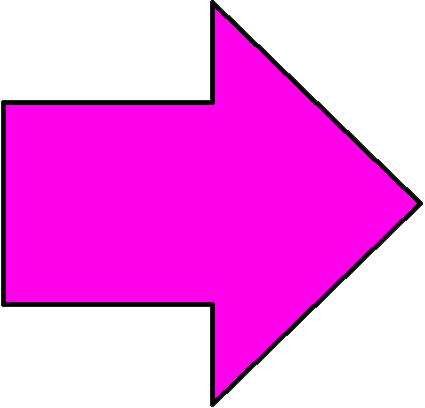
 |
Ielikt grozā |








